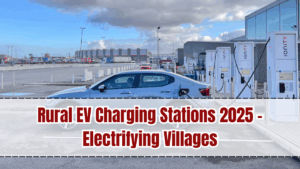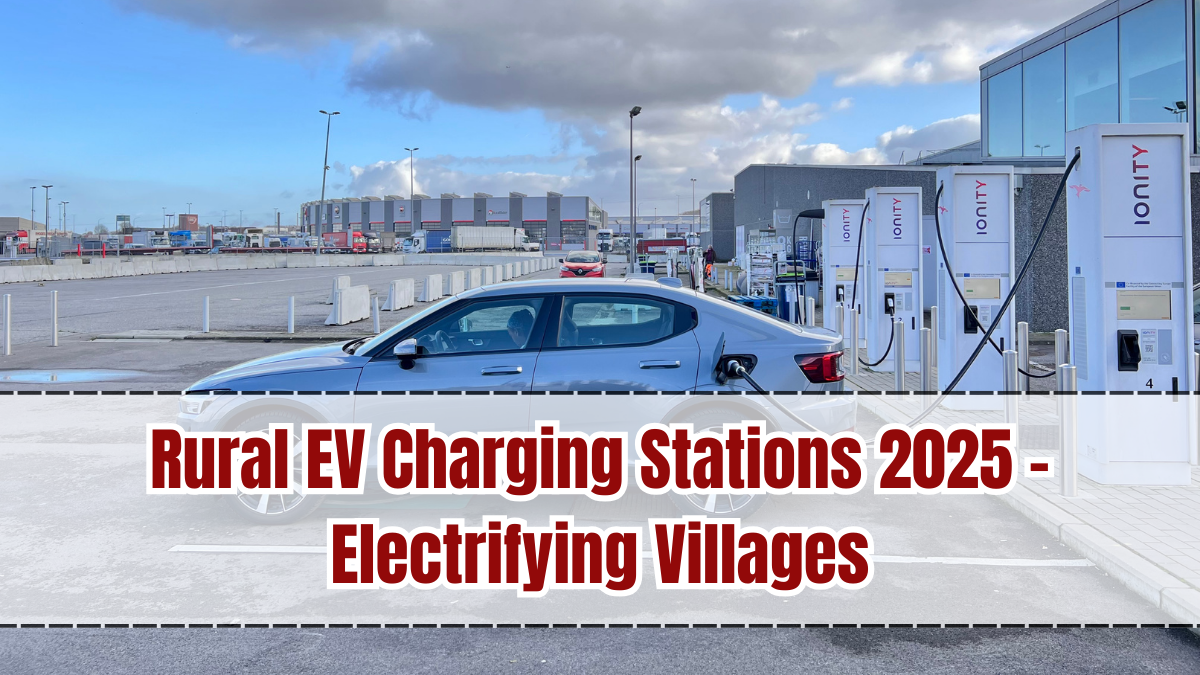The shift toward electric vehicles (EVs) is one of the biggest steps in building a sustainable future. While cities are rapidly adopting EV infrastructure, rural areas often lag behind due to poor connectivity and limited resources. In 2025, Rural EV Charging Stations are bridging this gap by bringing clean mobility solutions to villages. These initiatives are ensuring that rural communities also benefit from the EV revolution while reducing dependence on fossil fuels.

What are Rural EV Charging Stations?
Rural EV Charging Stations are dedicated facilities set up in villages and semi-urban areas to provide convenient charging access for electric vehicles. Unlike urban hubs, rural stations are often powered by renewable energy sources such as solar or wind, ensuring affordability and sustainability.
Key features include:
-
Solar-powered charging stations for off-grid areas.
-
Low-cost charging suitable for two- and three-wheelers.
-
Mobile apps for locating and booking charging points.
-
Battery-swapping facilities for faster turnaround.
-
Integration with government-backed rural electrification programs.
Why They Matter in 2025
The significance of Rural EV Charging Stations 2025 lies in their ability to make green mobility inclusive. Villages often depend on two-wheelers and shared transport, and providing EV charging in these areas encourages a shift away from petrol and diesel vehicles. This not only cuts fuel expenses for rural households but also contributes to lowering carbon emissions on a national scale. It also supports rural businesses by making logistics and commuting more cost-effective.
Benefits of Rural EV Charging
The expansion of charging infrastructure in villages brings wide-ranging benefits:
-
Affordable Mobility: Cheaper charging compared to rising fuel costs.
-
Sustainability: Promotes renewable energy-powered transportation.
-
Economic Boost: Encourages local entrepreneurs to set up EV-related businesses.
-
Improved Access: Supports farmers and traders in transporting goods more efficiently.
-
National Integration: Ensures rural areas are not left behind in the green transition.
Role of Technology
Technology plays a central role in rural EV charging solutions. Smart meters and IoT devices monitor power usage and optimize charging efficiency. Mobile payment platforms allow rural citizens to pay seamlessly for charging services. AI-powered demand forecasting helps manage energy loads and ensures stable electricity distribution. Battery-swapping technologies, combined with portable solar charging units, are also gaining popularity in areas with weaker grids.
Government and Industry Initiatives
Governments worldwide are prioritizing rural electrification to meet clean energy goals. In India, the FAME (Faster Adoption and Manufacturing of Hybrid and Electric Vehicles) scheme is supporting rural charging infrastructure, while NGOs are partnering with startups to set up solar-powered charging points. Industry players like Tata Power, Sun Mobility, and other clean-tech companies are actively expanding into rural areas, ensuring affordable access to EV charging.
Future of Rural EV Charging
The future of rural EV infrastructure looks promising. By 2030, micro-grids powered by renewable energy will make every village self-sufficient in powering EVs. Drone-based monitoring may be used to track energy consumption, while community-owned charging hubs will generate local employment. As rural EV adoption grows, integrated smart networks will ensure that villages contribute equally to the green mobility revolution.
Conclusion
Rural EV Charging Stations 2025 are a vital step toward inclusive and sustainable mobility. By making EV adoption possible in villages, they bring affordability, accessibility, and environmental benefits to millions. As governments, startups, and communities work together, rural charging infrastructure will not just electrify vehicles but also energize rural economies. The road to a greener future runs through every village, and rural EV charging stations are lighting the way.
FAQs
What are Rural EV Charging Stations 2025?
They are charging facilities set up in villages to provide affordable and sustainable charging for electric vehicles.
Why are they important for rural areas?
They make clean mobility accessible, reduce fuel dependency, and lower household transport costs.
How are rural EV stations powered?
Many use renewable sources like solar and wind to ensure cost efficiency and sustainability.
Do they support two- and three-wheelers?
Yes, most rural stations are designed for common rural vehicles such as two-wheelers and shared EVs.
What is the future of rural EV charging?
Future systems will include micro-grids, community-owned hubs, and AI-powered smart networks for efficient energy management.
Click here to know more.
